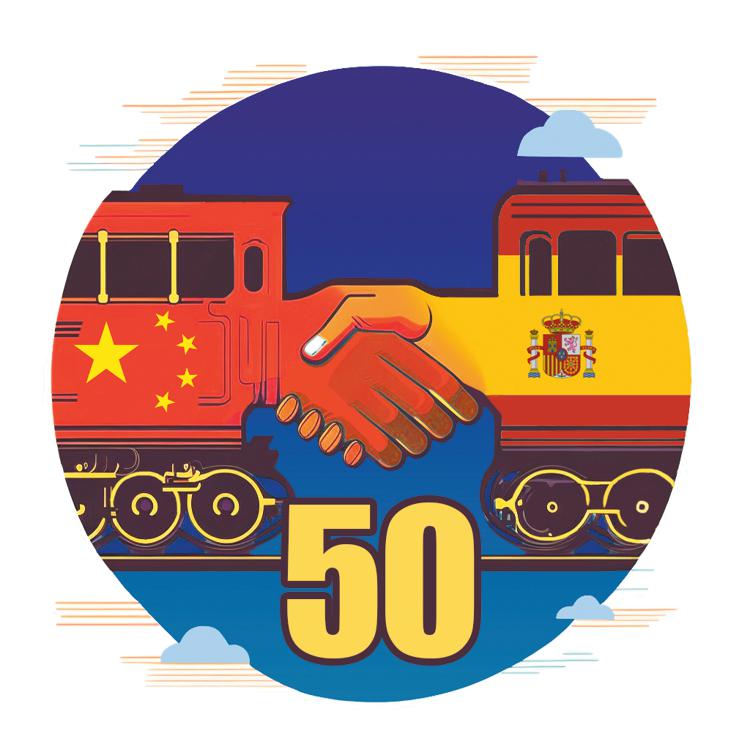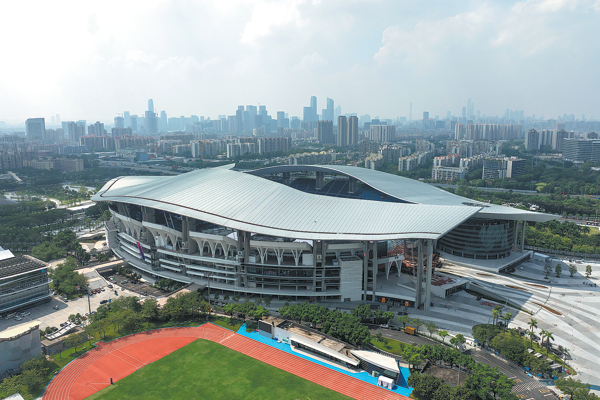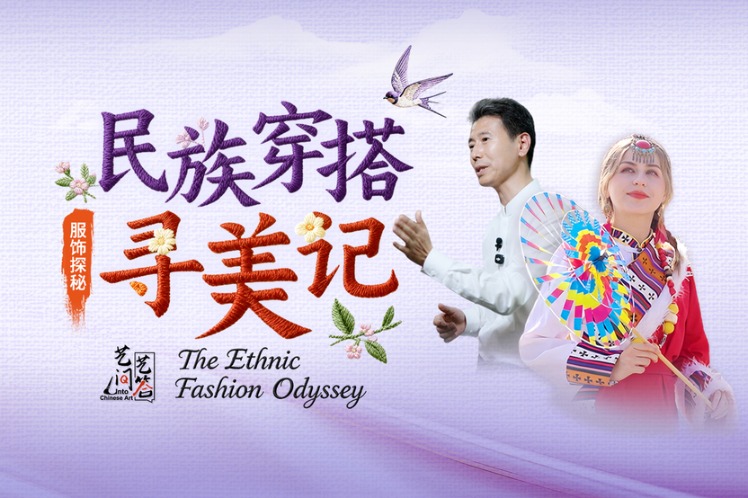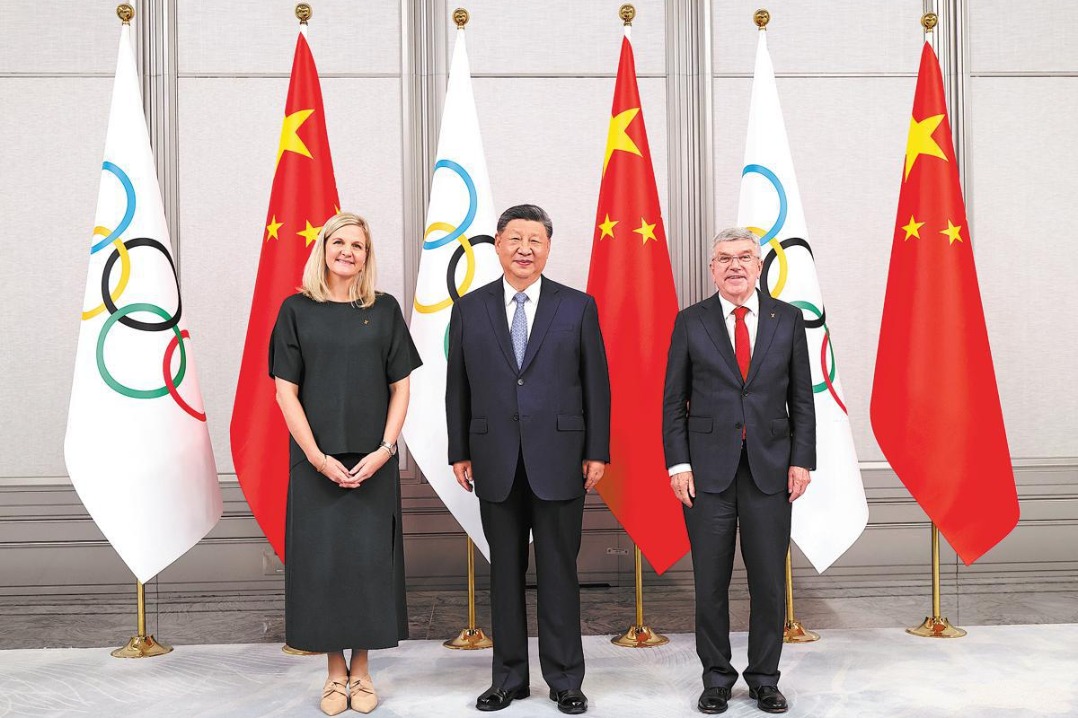Trade on track
China and Spain are shrinking the Eurasian land mass via the railway that links them


China and Spain are shrinking the Eurasian land mass via the railway that links them
There is a well-known Chinese saying declaring that "if you want to prosper, you must first build a road". Who can oppose such a principle of common sense, particularly when reality shows a practical change?
Spanish foreign trade statistics show that for the first time in history, China appears as its main supplier, ahead of Germany, France and the United States. Currently 11 percent of the goods that Spain buys from the rest of the world come from China. The figure is partly explained by Chinese dynamism, one of its most important factors being the Yiwu-Madrid train, a geoeconomic branch of the Belt and Road Initiative. The initiative celebrates its 10th anniversary this year, and its commemoration comes as Spain and China celebrate the 50th anniversary of the establishment of their diplomatic relations, a milestone in Eurasian affairs since it was signed by the two political systems back in 1973, at the very height of the Cold War.
Now bilateral ties are multidimensional, as Spanish Prime Minister Pedro Sanchez and Chinese President Xi Jinping confirmed on March 31 in the Chinese capital, almost coinciding with the arrival of the Yiwu-Xinjiang-Europe Express, especially named "China-Spain Diplomatic Relations Anniversary". In practical terms, on March 9, a train made up of 110 standard containers carrying ceramic products, electric scooters, daily necessities as well as small commodities, departed from the East of the Eurasian mega-continent for Madrid. At the same time, a train loaded with 70 containers of sparkling water, olive oil, sunflower oil, wine, baby food, daily chemical products and various Spanish specialties left from the other side of the landmass for Yiwu.
In August 1989, in the final stretch of the Cold War, when crossing Eurasia between Beijing and Berlin with a stopover in Moscow, I personally witnessed the very notable trade and border restrictions typical of that time. During the following period, the post-Soviet countries devised some new railway lines, very modest and basically of local and regional significance. But one decade ago, China surprised the world with a truly Eurasian train linking Yiwu and Madrid. Ever since, the train which covers 13,052 kilometers, passing through eight countries, has departed from its origin in the direction of Spain almost 300 times. Over these years, the travel duration has shortened from about 20 to 16 days, refrigeration services have been improved, and major hub destinations in Western Europe have been added apart from Duisburg and Madrid, including London and Milan.
All in all, taking a bird's-eye view, neither the COVID-19 pandemic nor the conflict in Ukraine has been insurmountable obstacles for a train permanently supporting win-win situations for Spain and China and for dozens of countries. The train will undoubtedly play a role as an open-door element to balance the bilateral trade. For example, the Ministry of Agriculture, Fisheries and Food of Spain and the General Administration of Customs of China have agreed on phytosanitary protocols that will allow the export of Spanish almonds and persimmons to China. The sector forecasts that by 2025, almost 50,000 metric tonnes of Spanish almonds could be exported to China, representing more than 40 percent of production, which represents a very significant volume. These agreements have been signed within the framework of the Spanish prime minister's visit to Beijing. The Spanish government highlighted the prime minister's meetings in Beijing on March 31, and at the Boao Forum for Asia the previous day, also served to facilitate multiple investment opportunities between the two countries that exist in sectors such as the manufacturing of electric vehicles and industries such as pharmaceuticals and renewable energy.
Another window of opportunity, particularly for those who claim that the Belt and Road Initiative is predominantly favoring China, is the possibility to integrate synergies, helping to transform not only the terrestrial trade landscape but also the maritime one, integrating them both. Six years ago, Spanish state ports authorities led a trade mission that presented the Spanish offer at the Transport Logistic China, an international trade fair for logistics, telematics and transport, in Shanghai. The ports of Algeciras, Barcelona, Bilbao, Cartagena, Huelva and Valencia were represented in the pavilion, together with major shipping companies and renowned established port operators such as MSC, Hutchison, COSCO and Hanjin. Their goal was to promote themselves as part of the Belt and Road Initiative in the Mediterranean. Specifically, they presented Spanish ports as the ideal alternatives for a better and faster connection between China and Europe. During the trade fair they explained that through Spanish ports, four days can be saved to enter Europe, much shorter than through large and traditional northern European ports in the longer route leading to Amsterdam and Hamburg. Therefore, if Spanish representatives' figures and data are carefully assessed, it would be recognized that the significant time saving would also reduce the environmental impact of transporting the freight.
Observers believe that the Spanish prime minister's visit shows that both sides greatly value the healthy and promising development of bilateral ties. It also serves as an interesting start for a series of upcoming visits to Beijing by European leaders, and for a wider reflection on the global situation. Spain, Europe, China and the world are at the threshold of the evolution of artificial intelligence. Currently in Shenzhen and other high-tech Chinese cities, everything from systems to direct traffic to the planning of ships capable of traveling hundreds of kilometers without a pilot are being developed. Most likely, seen from April 2023, China will be the world reference for innovation in this sector before 2030.
On a wider scope, as Prime Minister Sanchez stated during his visit to China, "Europe and Asia must join forces to address global challenges and seize every opportunity to promote dialogue and cooperation". Actually it is another way of saying dialogue with China. And the potential synergies with President Xi's Global Development Initiative, proposed at the United Nations General Assembly in 2021, are apparent. Aimed at building a global community of development, the initiative proclaims development first while seeking to expedite the implementation of the United Nations 2030 Sustainable Development Agenda.
The author is a professor of the Esade Educational Institution in Ramon Llull University and the director of the Dialogue with China Project in Spain. The author contributed this article to China Watch, a think tank powered by China Daily. The views do not necessarily reflect those of China Daily.
Contact the editor at editor@chinawatch.cn.
































